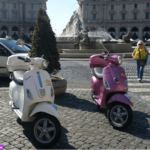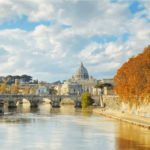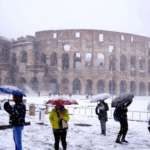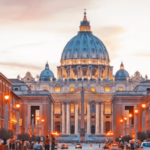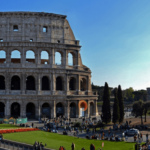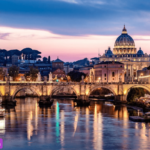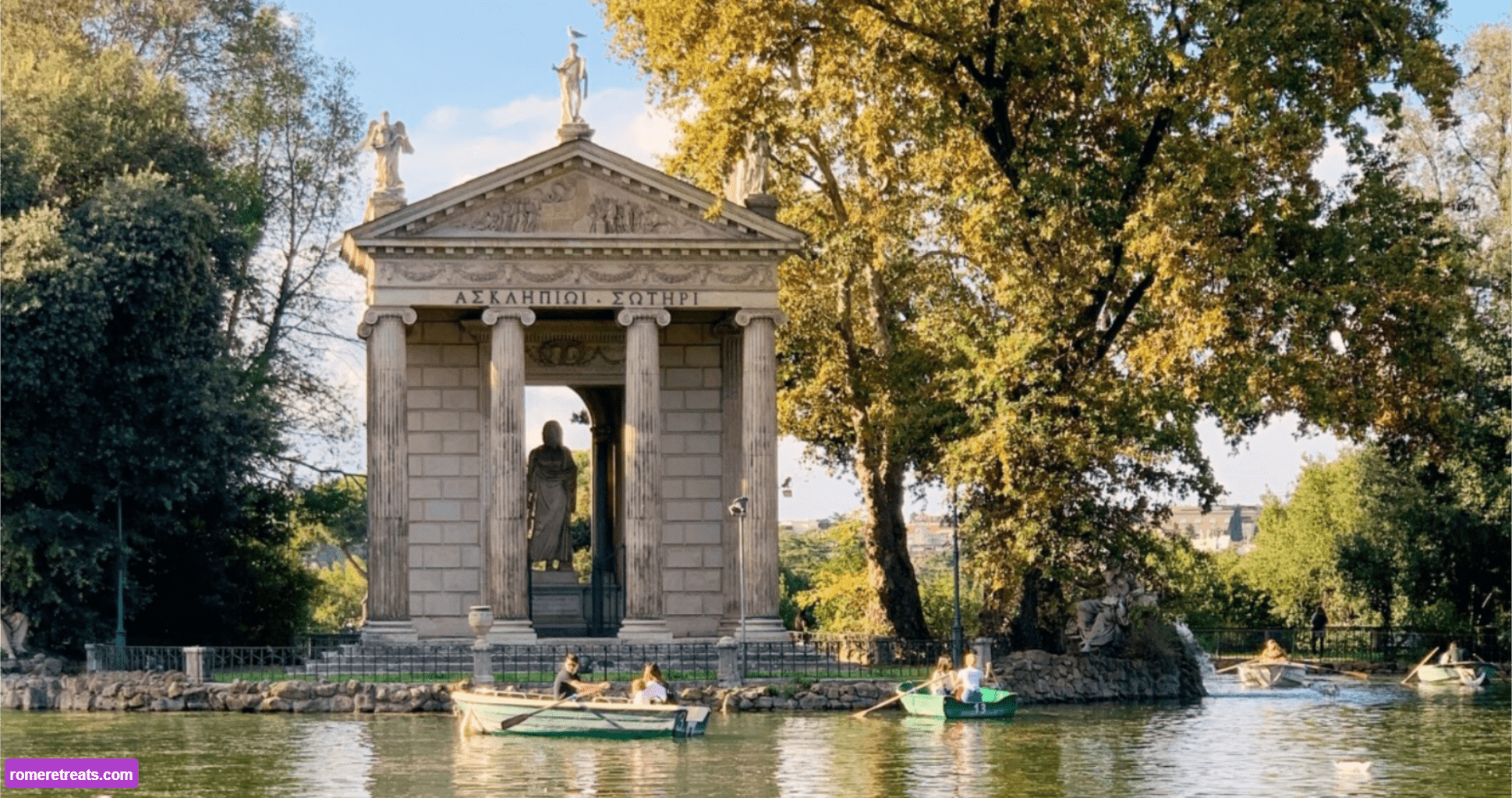Rome Without the Crowds: Rome is bustling with tourists for most of the year, and during certain months, it can become overwhelmingly crowded. Spring is one of the prime times to visit, thanks to the pleasant weather. However, alongside the great climate, you’ll also encounter large crowds at popular attractions. In summer, the intense heat adds an extra layer of discomfort to an already challenging experience.
Fortunately, Rome offers a wealth of landmarks, making it possible to enjoy a more relaxed travel experience even in such a highly visited city.
There are numerous strategies to enjoy a slower-paced visit to Rome, from choosing the right time of year to avoiding the busiest hours at popular sites. This article will also highlight some lesser-known attractions if you’re interested in exploring alternatives to the typical tourist spots.
Disclaimer 1: The intent of this article is not to suggest skipping major landmarks but to offer options if you’re weary of long lines, large crowds, or simply want to explore quieter places during peak times.
Disclaimer 2: I acknowledge that no church in Rome compares to Saint Peter’s Basilica. However, if the thought of waiting in long lines under the scorching sun is unappealing, this guide will provide alternative options so you can visit St. Peter’s Basilica just before it closes, when the crowds tend to thin out.
Discovering Rome without the crowds can transform your travel experience, offering a more serene and authentic view of the city’s rich history. Explore our step-by-step guide to planning a trip to Rome with very less crowds.
Tips for Exploring Rome Without the Crowds
Avoid the High Season
It’s straightforward but often overlooked: many travelers flock to Rome in the spring and summer without considering the crowds or heat. If you have flexible travel dates, consider visiting in the fall or winter. Winter in Rome is mild and far less crowded. While the festive season around Christmas can be busy, the rest of the city remains pleasantly quiet and relaxing. Visiting Rome without the crowds often means fewer lines and a more relaxed atmosphere, enhancing your overall enjoyment. To experience Rome without the crowds, consider traveling during the off-peak seasons or visiting popular sites during less busy hours.
Prefer Early Mornings and Evenings
If your visit is during peak tourist season, plan to visit popular sites early in the morning or late in the evening. For example, you can explore public squares like Piazza Navona or Trevi Fountain at 6 am, when they’re less crowded. Embracing Rome without the crowds can lead you to unexpected discoveries in charming neighborhoods and less frequented attractions.
Although many attractions don’t open at 6 am, you can still book early entry tickets or visit a few hours before closing to avoid the largest crowds. Exclusive tickets and private tours are great options to experience major landmarks with fewer people.
Visit Lesser-Known Landmarks
While iconic sites like the Trevi Fountain and Spanish Steps are world-renowned, Rome is full of lesser-known attractions that are often overlooked. Wander off the beaten path into quieter alleys where every corner reveals a piece of history or a unique architectural detail.
I’ve created an ebook featuring four self-guided walks through different neighborhoods of Rome to help you discover both popular and hidden gems at your own pace.
Take a Day Trip
Day trips can be a great way to escape the crowds of Rome. While some nearby towns can be busy, others offer a peaceful retreat. Consider exploring less frequented areas like Roncigliano or Bolsena Lake for a tranquil experience.
Find an Alternative
Rome’s wealth of historical sites means you’ll always find something to see if you can’t visit a major landmark. While some sites are irreplaceable, like the Pantheon and Vatican Museums, consider alternatives if long lines or intense heat are a concern.
Alternative Rome Landmarks to Consider
Alternative to the Colosseum: Baths of Caracalla
While the Colosseum is a must-see for many, the Baths of Caracalla offer a stunning alternative. These ancient wellness centers include pools of varying temperatures, a gym, and a library. Today, they house Rome’s largest Mithraeum, a temple dedicated to the Persian god Mithra. The expansive site allows for a thorough exploration of its historical grandeur.
Alternative to the Colosseum: Trajan’s Markets
Located in Piazza Venezia, Trajan’s Markets are a fantastic site that often goes unnoticed despite their historical significance. Originally serving as administrative offices and hubs for the Forum of Trajan, the markets offer a fascinating array of relics, reproductions of temples, and detailed explanatory panels.
Alternative to the Colosseum: Imperial Fora
The Imperial Fora are another excellent alternative to the Colosseum. This archaeological site was central to Ancient Rome’s political life, featuring grand temples, buildings, and squares. It’s an impressive site that provides a rich historical experience.
Alternative to the Colosseum: Ostia Antica
For history and archaeology enthusiasts, Ostia Antica is a treasure trove of ancient ruins. This large archaeological site provides insights into ancient urban life, including residential areas, shops, public baths, and event spaces. It’s easily accessible from Rome and offers a more spacious experience compared to Rome’s more crowded sites.
Alternative to Saint Peter’s Basilica: Basilica of Santa Maria della Vittoria
Located in the Castro Pretorio neighborhood, this smaller church is a Baroque masterpiece with intricate decorations and artwork. Designed by Carlo Maderno, the Basilica of Santa Maria della Vittoria is renowned for its stunning sculpture, the Ecstasy of Saint Teresa, by Gian Lorenzo Bernini.
Alternative to Saint Peter’s Basilica: Basilica of Santa Maria Sopra Minerva
Near the Pantheon, the Basilica of Santa Maria Sopra Minerva is an accessible yet lesser-visited site. Founded in the 7th century, this Gothic church features Michelangelo’s statue of the Resurrected Christ and an Egyptian obelisk supported by a Bernini-crafted elephant. The church also boasts a charming cloister.
Alternative to the Vatican Museums: Museo Nazionale Romano in the Diocletian Baths
The Museo Nazionale Romano, housed in the Baths of Diocletian, offers an extensive collection of Roman artifacts and relics. While the Vatican Museums focus on more modern art, this museum provides a deep dive into classical Roman history and archaeology.
Alternative to the Vatican Museums: Capitoline Museums
The Capitoline Museums are a lesser-known gem compared to the Vatican Museums. They offer a comprehensive look at Rome’s history from its origins to modern times. The museum’s collections span various historical periods, making it a valuable visit for those interested in Roman history.
Alternative to Piazza di Spagna: Piazza del Popolo
Piazza del Popolo offers a different experience compared to Piazza di Spagna. Located at the entrance to the Tridente area, it features a variety of landmarks, including fountains, churches, and historical gates, providing a unique and less crowded alternative.
Alternative to Galleria Borghese: Palazzo Barberini
Palazzo Barberini, a historical palace commissioned by Pope Urban VIII, houses a significant collection of paintings and sculptures. Designed by renowned architects such as Bernini and Borromini, the palace is known for its impressive staircases and historical artworks.
Alternative to Villa Borghese: Villa Torlonia
While Villa Borghese is expansive, Villa Torlonia offers a more compact but equally fascinating experience. This park includes notable landmarks such as the Casino Nobile, the House of the Owls, and the Moorish Greenhouse. Located in the residential Via Nomentana area, Villa Torlonia is perfect for a quieter exploration of Rome’s modern history.
Alternative to Santa Maria in Trastevere Basilica: Basilica of Santa Cecilia in Trastevere
Though Santa Maria in Trastevere is well-known, the Basilica of Santa Cecilia in Trastevere offers a unique experience. Built on the site of a Roman patrician’s martyrdom, it features beautiful marble, a crypt with arches, and ancient Roman ruins.
Alternative to Trastevere: Quartiere Coppedè
If Trastevere feels too crowded, consider the Coppedè Quarter in the Trieste neighborhood. This area features unique Liberty-style architecture with influences from Greek, Roman, Gothic, and Baroque traditions. It’s a less touristy spot with authentic dining options.
Less Crowded Landmarks in Rome Worth Your Time
Castel Sant’Angelo
Despite being a popular landmark, Castel Sant’Angelo often has short or no lines at the entrance. This historic site, spanning from the 2nd century to the present, offers an in-depth look at Rome’s layered history.
Sant’Agnese Fuori le Mura Complex
Located outside the Aurelian Walls, the Sant’Agnese Fuori le Mura complex includes a medieval church, expansive catacombs, and the Mausoleum of Costanza. Easily accessible via metro, it provides a fascinating glimpse into Rome’s ancient past.
This stunning church and its surrounding complex offer an impressive view of the city from the top of the Spanish Steps. It’s less crowded and provides a serene environment for appreciating Rome’s architectural beauty.
